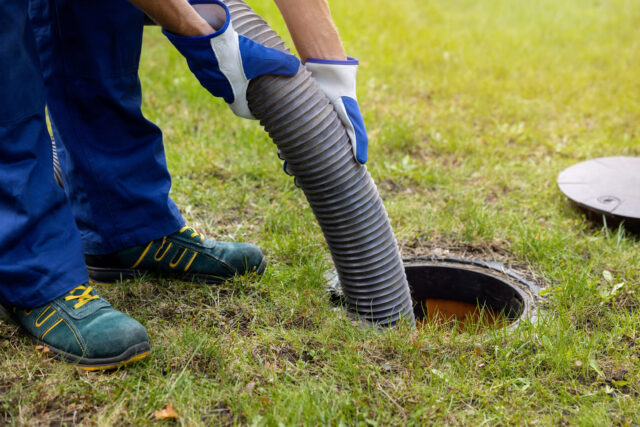A tired septic system can hurt your sale. An upgrade turns a hidden risk into a clear asset that supports value now and years from now. New tanks, filters, and drainfields handle today’s usage and future growth so inspections pass and buyers relax.
Modern systems run cleaner, cut odors, and lower the chance of backups that wreck weekends and lawns. You also gain clean records, transferable warranties, and fewer surprise service calls. If you plan to add a bathroom or host more guests, you are ready. Protect your yard, budget, and resale.
How Much Value Does a New Septic System Add to a House?
A newer, documented system adds value through marketability, risk reduction, and peace of mind. You see the payoff in price, time on market, and fewer concessions.
1) Marketability
A code-compliant, recently installed system widens your buyer pool.
- More showings and stronger offers
- Less time on market
- Fewer last-minute septic surprises
2) Risk Reduction
Clean permits and paperwork calm buyers and lenders.
- Fewer credits or holdbacks
- Lower chance of emergency replacements
- Smoother appraisals and underwriting
3) Lifecycle Peace of Mind
Capacity that matches real life builds confidence.
- Room for guests or a future bedroom
- Better fit for rentals and multi-gen living
- Clear maintenance and cost expectations
Rule of thumb: In septic markets, a new system acts like a quiet remodel. It supports price, trims concessions, and helps you close faster.
Extra ways it pays back:
- Insurance is simpler when inspections are clean
- Maintenance follows a predictable schedule
- Rentals perform better with documented capacity
Are Modern Septic Systems Better for the Environment?
Yes, when designed and maintained correctly. Newer systems treat wastewater more effectively and work with your soil and groundwater.
What “modern” includes:
- Effluent filters and baffles that keep solids in the tank
- Pressure or timed dosing that spreads flow evenly
- Advanced treatment units that cut nutrients and pathogens when needed
- Field designs that match soil tests, slopes, and setbacks
Why it matters:
- Cleaner effluent reduces nutrient loading in nearby water
- Healthier soils support the microbes that finish treatment
- Lower risk of surfacing effluent after heavy use
Eco tips:
- Pair upgrades with water-wise fixtures and good kitchen grease habits
- Ask about nutrient reduction if you live near sensitive waterways
What are the Signs an Old Septic System is Failing?
Catch small problems early to avoid big repairs.
Early signs
- Multiple slow drains
- Gurgling after flushes
- Stronger odors outside near the tank or field
Mid-stage
- Backups at showers or floor drains after heavy use
- Soggy or extra-green grass over the field in dry weather
- Frequent effluent filter clogs
Red flags
- Standing water over the field
- Persistent sewage odors indoors
- Alarm on a pump tank that keeps sounding
Habits that shorten system life
- Marathon laundry days
- Wipes or “flushables” down the toilet
- Grease in the sink
- Long back-to-back showers
Do Septic System Regulations Affect Property Sales?
Yes. Rules protect public health and water quality, and they show up during sales and refinances.
How rules appear:
- Point-of-sale inspections: May trigger required repairs. An upgraded system turns this into a green light.
- Capacity and bedrooms: Lenders match septic capacity to bedroom count. Right-sized systems keep financing on track.
- Setbacks and siting: Upgrades fix older placements that are too close to wells, lines, or waterways.
- Documentation: Permits, as-builts, and service records speed closing.
Negotiation edge:
A compliant, documented upgrade removes leverage for buyer discounts and helps you keep your terms.
The Business Case for Upgrading
View the system like an investor would.
- Stability: Predictable maintenance beats emergency weekends
- Financing: Easier refis and buyer loans later
- Usability: More guests and rental capacity without stress
- Future-proofing: Space to add a bath or bedroom without starting over
You also gain peace of mind when the house is full and everything drains like it should.
A Practical, Human-Sized Upgrade Roadmap
Follow these steps if your system is older, undersized, or unknown.
Start with a professional evaluation
- Pump the tank if due
- Inspect baffles and filters
- Camera the lines
- Check the distribution box and field health
Right-size for real life
- Factor in guests, home office use, multi-gen living, and potential additions
Design for durability
- Discuss advanced treatment if needed
- Consider pressure dosing and a field layout that fits your soil
- Choose serviceable parts like accessible filters and audible alarms
Document everything
- Keep permits, as-builts, pump receipts, and service notes in one digital and paper folder
Adopt simple house rules
- Post a “do not flush” list
- Keep grease out of drains
- Pace laundry through the week
Schedule maintenance
- Clean the effluent filter and pump on a usage-based schedule
- Set reminders like you do for dental visits
Get A Septic Upgrade Plan That Pays You Back
Turn a buried system into a visible value add. Our plan helps owners who want long-term results.
What you get:
- Full evaluation of tank, lines, distribution, and field with photos and a plain-English report
- Right-sizing consult based on how you actually live or rent
- Design and permitting support for a code-compliant, future-ready system
- Installation with accessible filters, alarms, and a simple maintenance calendar
- An Owner’s Dossier with permits, as-builts, service schedule, and a one-page house rules sheet for guests or buyers
Do not wait for a soggy lawn to tell you it is time. Call HoneyBee Septic Tank Service to schedule your underground consultation and turn an invisible liability into a real asset that protects your home’s value today and the deal you close tomorrow.
